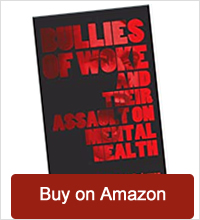Here is the link to the Ombudsman’s Report agreeing with my complaint against their October 24 “Q” panel discussion on mental illness and terrorism.
Hold the Diagnosis: Linking mental illness and violent acts reinforces stereotypes; precise and careful reporting is required
Hold the Diagnosis: Linking mental illness and violent acts reinforces stereotypes; precise and careful reporting is required
No proof. No professional references. Judy Rebick, John Cruickshank and Jonathan Kay- three journalists giving us their opinion. They had a feeling that he was mentally ill.
You added that the program host did not challenge their assumptions in any way. You said you believed there was ample evidence that the label of terrorist was more apt and questioned why the panelists chose to define Michael Zehan-Bibeau, the killer of Cpl. Cirillo, as mentally ill instead of a terrorist even though there had already been statements made that Zehan-Bibeau was a terrorist.
You pointed to RCMP statements that this was an act of terror, not mental illness, made after the date of the panel. You added that he “had followed the pattern of lone-wolf terrorists” and had spent time on social media and websites that glorified Jihad. You concluded that this choice was made because it fit into a CBC agenda, a criticism you have made in the past. You said that there was an agenda at play, and the facts were made to fit that agenda:
It seems the CBC was far more concerned about offending Muslims than the mentally ill. Perhaps you don’t fear a backlash from the mentally ill community as much as from the Muslim community. At the very least there should have been some discussion about the fact that both men fit the parameters of a lone wolf terrorist…In my humble opinion the panel and moderator on Q that day chose to plant a seed of fear for the mentally ill in order not to cast aspersions on Muslims and Islam, or be accused of Islamophobia.
MANAGEMENT RESPONSE
The acting executive producer of Q, Jamie Purdon, replied to your concerns. He told you he had listened to the panelists’ references to mental illness very closely. He did not agree with your assessment. He said he found the debate “quite balanced.” He said Jonathan Kay, one of the panelists, supported the Prime Minister’s position that the shooting in Ottawa was the act of a terrorist. He added that Mr. Kay also mentioned that Zehan-Bibeau was troubled and had “addiction issues.” He thought it defensible that one of the panelists thought that “the attack was carried out by someone who was not in his right mind.” He added that one of the panelists pointed out that it was not an either/or position and the purpose of the panel is to have well informed participants express a range of views:
People can have a terrorist motive and still be mentally troubled. So in the panel a full range of views were expressed. The media panel is a place for informed people to express their opinion. The program may not always agree with the positions expressed. Just as many of our listeners may also be divided. We believe there is value though in having a fulsome debate where as many sides as possible are expressed. I believe this happened in this panel.
REVIEW
The purpose of the Q panel was to assess the media coverage of the two dramatic events of that week: the shooting of Cpl. Nathan Cirillo by Michael Zehaf-Bibeau and the hit and run killing of Warrant Officer Patrice Vincent by John Maguire. Most of the discussion focused on Zehaf-Bibeau because that event had played out virtually live on television, and lasted for many hours. The focus was how the Canadian media did, how it labelled and characterized the perpetrators, and if they did so in a responsible way. The three panelists were Toronto Star publisher John Cruickshank, Jonathan Kay, at the time the comments editor at The National Post, now the Editor-in-Chief of The Walrus, and Judy Rebick of rabble.ca.
Guest host Piya Chattopadhyay asked them to reflect on the nature of the coverage. The reference to mental illness came early in the discussion. Jonathan Kay first referenced it to show how coverage of these kinds of incidents had changed in the thirteen years since 9/11, when reporting was more frantic and fear mongering:
I remember after 9/11 the story was this could happen tomorrow, it could happen the next day; this could happen anywhere, there could be sleeper cells in your community and that wasn’t the narrative at all this time. In part because we have had 13 years’ experience with this kind of climate but also in part we figured out that this was one guy, that he was a mentally troubled guy; it turns out he was a drug addict apparently so he wasn’t representative of some kind of seething Muslim radicalized substantial community that was going to strike tomorrow and the next day and the day after that.
There was quite a lot of discussion about how Zehaf-Bibeau should be labelled and how the media portrayed him. That is a legitimate topic of conversation. It is even legitimate to raise issues about the state of mind of the perpetrators. There is always a tendency to make sense out of what seems senseless, based on limited information. I completely disagree that the discussion was unbalanced because there was reluctance on some of the panelists’ part to label this as an act of terrorism.
I equally find no validity in some notion that this was a plot, a part of an agenda to conform to some agenda so as to not antagonize the “Muslim community.” There was no shying away from the fact that Zehaf-Bibeau was involved with militant Islam. Kay states “[he] was actually proselytizing militant Islam at his homeless shelter.” There was a fulsome discussion of what characterizes a “terrorist act” and if these two incidents fit the definition.
I do agree that the labelling of mental health and the way the terms like “nuts” and “crazy” were bandied about was unacceptable. The panel discussion failed for that reason, not because there was not what you consider an adequate focus on terrorism. I agree it is not good practice to bandy about second hand, non-professional assessments of the perpetrators’ mental condition. That isn’t to say it is not valid to point out others saw them as disturbed, unsettled, struggling. That is a description of behavior.
What is to be avoided, and wasn’t in this discussion, is labelling and setting up the notion of mental illness as the cause of the behavior. It reinforced the stereotype that people with mental illness are perpetrators of violence when the truth is that people with mental illness are far more likely to be the victims of violence. There were times when it sounded like issues of mental health were the only legitimate explanation, other than terrorism. And while the host intervened to clarify when other ideas were raised, you were right, there was no challenging these assumptions. In making his argument not to see these events at acts of terrorism, Mr. Cruickshank says:
Let me note that in every age craziness takes on a particular complexion. Just as people go to Jerusalem and they begin to believe they are Jesus Christ, and people go to Iceland and think they are Bjork, right? I mean that’s just the kind of thing that happens. And right now in a period when a kind of craziness leads to people thinking that they are terrorists supporting ISIL. If we take that seriously we are simply taking the nuttiness seriously. We are taking crazy seriously. And we’re telling people this is on all fours with an organized attempt to create terror amongst the population and subvert our society. This is not what is happening here.
CBC Journalistic Standards and Practices does not have specific policy about discussing mental illness. It does have policy about use of language and avoiding the reinforcement of stereotypes.
We avoid generalizations, stereotypes and any degrading or offensive words or images that could feed prejudice or expose people to hatred or contempt. Criminal matters require special care and precision.
When a minority group is referred to, the vocabulary is chosen with care and with consideration for changes in the language.
The understanding of the challenges and issues of dealing with stigma and covering mental health issues is evolving. There is certainly a growing awareness there is an issue. CBC News may not have specific policy on reporting mental illness, but it is the media sponsor of a guide that was published last spring, Mindset: Reporting on mental health. (Full disclosure: I was involved in the creation of the guide in a volunteer capacity through my association with the Canadian Journalism Forum on Violence and Trauma. The Mental Health Commission of Canada sponsored the project.)
The guide is designed to provide general assignment reporters and editors with a clear understanding of mental health reporting issues and to provide guidance on how to report responsibly, without reinforcing stereotypes. Among some of the suggested best practices is to be very careful to use specific terms and diagnoses and not to use vague and loose terms. The guide also recommends consulting experts and to only report mental conditions when they have been confirmed by an expert, as opposed to hearsay of a neighbour or friend. It also cautions not to jump to conclusions about cause and effect. In other areas of reporting such as minorities and other vulnerable members of society, practice and approach have evolved.
It is not that it is wrong to talk about mental illness or to wonder if it plays a role in cases like these. The problem is broad sweeping statements made with no context. This panel discussion is an example of that. Since CBC News is associated with an effort to increase understanding and improve the journalism on mental health issues, it might be a good idea for news and current affairs managers to make sure their staff is aware of the guide, and more importantly, the principles behind it.
Ms. Chattopadhyay began the discussion by citing a guidance note she and her colleagues had received from CBC News management while they were covering the Ottawa shooting in real time. She said it asked producers and reporters to exercise restraint when they were covering the live breaking events. It is good advice in the aftermath, and in the rush to judgment afterwards; with the best of motives, it is important to be cautious about the labels used and the context provided. This program segment did not live up to the standards laid out in CBC’s Journalistic Standards and Practices.
Esther Enkin
CBC Ombudsman


